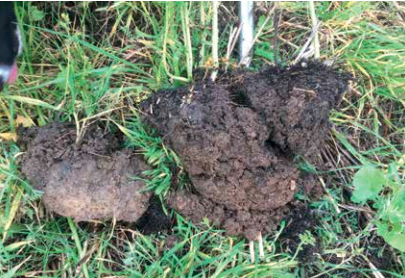Written by James Warne of Soil First Farming
In my article in the last edition of this humble magazine I discussed basic cover cropping strategy, in this article I will
cover some of the frequent questions which have been posed to me since that article. I accept that to many this may
seem obvious but if you are new to Conservation Agriculture or thinking about zero-till then it may often seem like an
additional cost with little easily recognizable benefit.
Cover crops seem to promote slugs, how do we deal them?
I would firstly argue that slug populations are cyclical, some years the environmental conditions are conducive to rising populations, other years lead to declining populations so it may not always be something you can easily control. Having brassicas too close in the rotation may cause problems as brassicas seem to increase slug numbers. Anecdotally mustard seems to provide beneficial habitat for slugs which seems to go against recent research which suggests that bare soil may actually increase slug numbers more so than mustard.
Following a Conservation Agriculture (CA) system will allow natural predators to build. Natural predators include carabid beetles, some song birds, hedgehogs, frogs and toads. Almost all farms we visit comment on how the wildlife returns to the farm gradually once in the system. Again it’s another indication that we all can benefit from not cultivating.
Consolidate the seeding zone well. Roll, roll and roll again after drilling to ensure good seedbed consolidation. I cannot stress enough the importance of rolling. Unless soil conditions are perfect at drilling it is most likely that the seed to soil contact will be reduced and the seed slot will not be well closed and consolidated. This allows slugs to travel with ease along the seed slot. Better soil consolidation will reduce this.
I seem to get reduced yields when drilling into cover crops in the spring, why is this? There are several contrasting theories on this but I believe most can be explained away by considering the carbon:nitrogen ratios within the soil and the cover crop. Whether the cover crop has been desiccated before or after drilling the cash crop, the soil microbes will have a nitrogen demand as try to digest the carbon contained within the cover crop residue. This will be in addition to any residue left from the previous crop. It must be stressed that the soil microbes will always have the first bite at the nitrogen cherry, taking what they require at the expense of the cash crop. This maybe seen as poor or delayed establishment, or most likely a disappointing yield. I cannot stress enough how important it is to consider the potential nitrogen lock-up that occurs when adding large amounts of carbon to the soil.

Here at Soil First Farming we are now confident we can predict these situations using a more robust soil test designed in the USA. This soil test attempts to predict the available nitrogen to the following crop by using a series of measurements such as (but not exclusively) soil respiration, active carbon and nitrogen levels. The soil test results then gives a recommendation for future cover crop in terms of legume/non-legume balance. It also gives a measure of ‘soil health’ which can be used to build a picture over a number of years of soil improvement.
I am direct drilling, are cover crops necessary?
Very simply, YES. You can direct drill and leave bare fallow but experience suggests that sooner or later you are probably going to have to cultivate. The cover crop provides a source of sugars to the soil microbiology, the roots provide stabilisation and drainage to the soil, the biomass above ground protects the soil from the effects of direct sunlight and heavy rainfall and they are capturing carbon. Without the effect described above the soil is open to the effects of rainfall which causes it to slump and compact. It is less able to withstand trafficking from machinery passes. Of course all of these effects are hard to quantify, but plenty of research has been undertaken to quantify the effects of nitrogen and phosphate lifting and storing for the following crop.
Another contentious benefit of cover crops is their ability to ‘dry’ soil. Cover crops tend to transpire more water and dry soils from early-April through to mid-October as a generalisation. But even outside of these dates the cover crop can still aid drainage. It is not exactly clear how this occurs but I suspect that living roots are still taking in moisture and allowing soil drainage to occur. For comparison see the two photos below, showing examples of the difference in soil moisture with and without a cover crop. In essence if you are following a CA system cover crops are an essential part of that system.

The seed costs are too high, what can I do?
We are very keen on keeping the costs down wherever possible, ideally we think you should be aiming to spend no more than £20- 25/ha on cover crop seed. The simplest way of doing this is to grow your own seed, but we appreciate this doesn’t suit everyone. Similarly many of the crops you have in store may also work very well such as OSR, barley and linseed. Buying straights and self-mixing is also cost effective.
What should I do with failed OSR?
Failed OSR could make a great overwinter cover crop which could be drilled into in the spring. Again normal caveats apply when deciding upon timing of destruction of the cover crop such as the amount of grass weed existing within the cover.